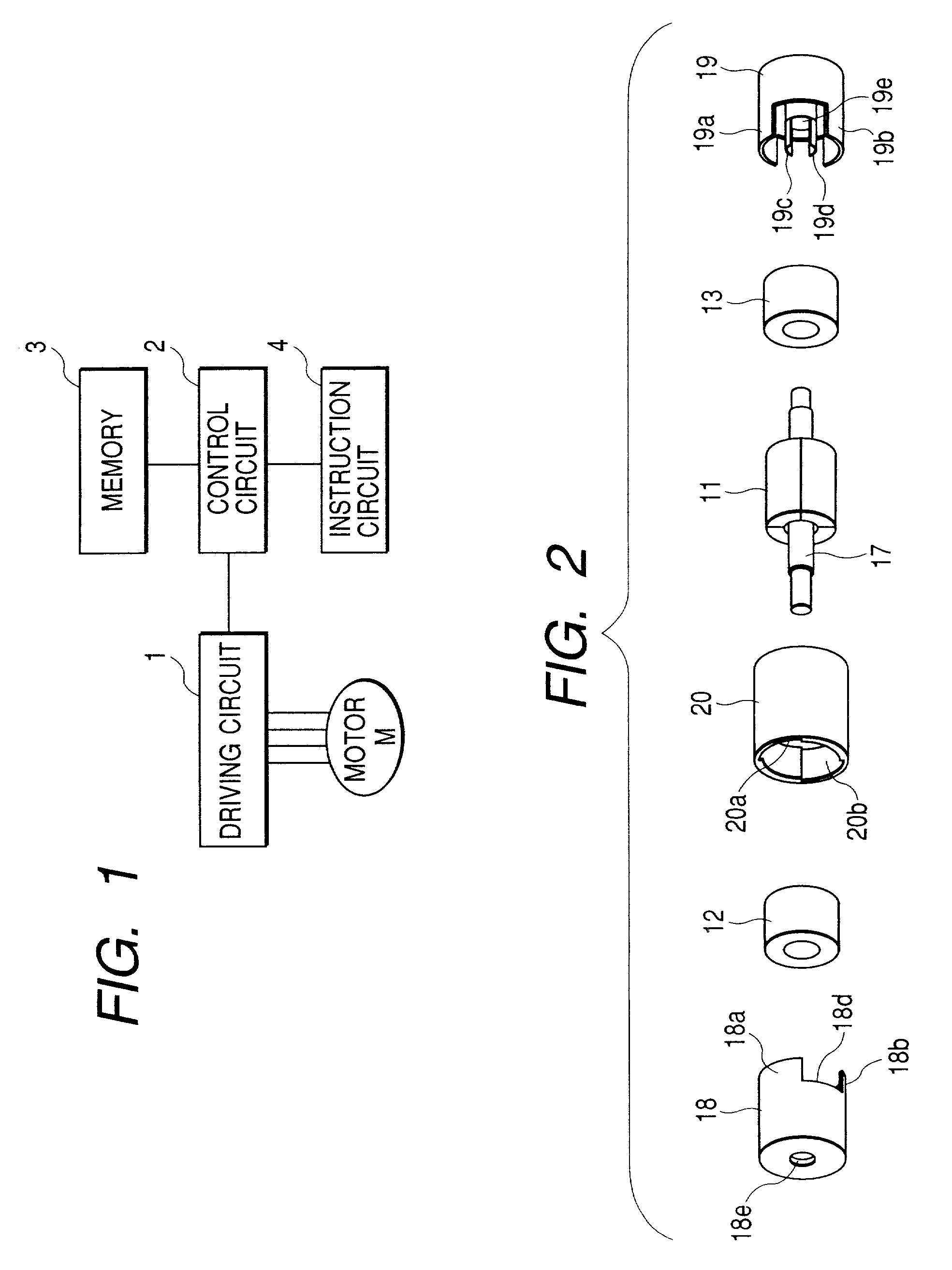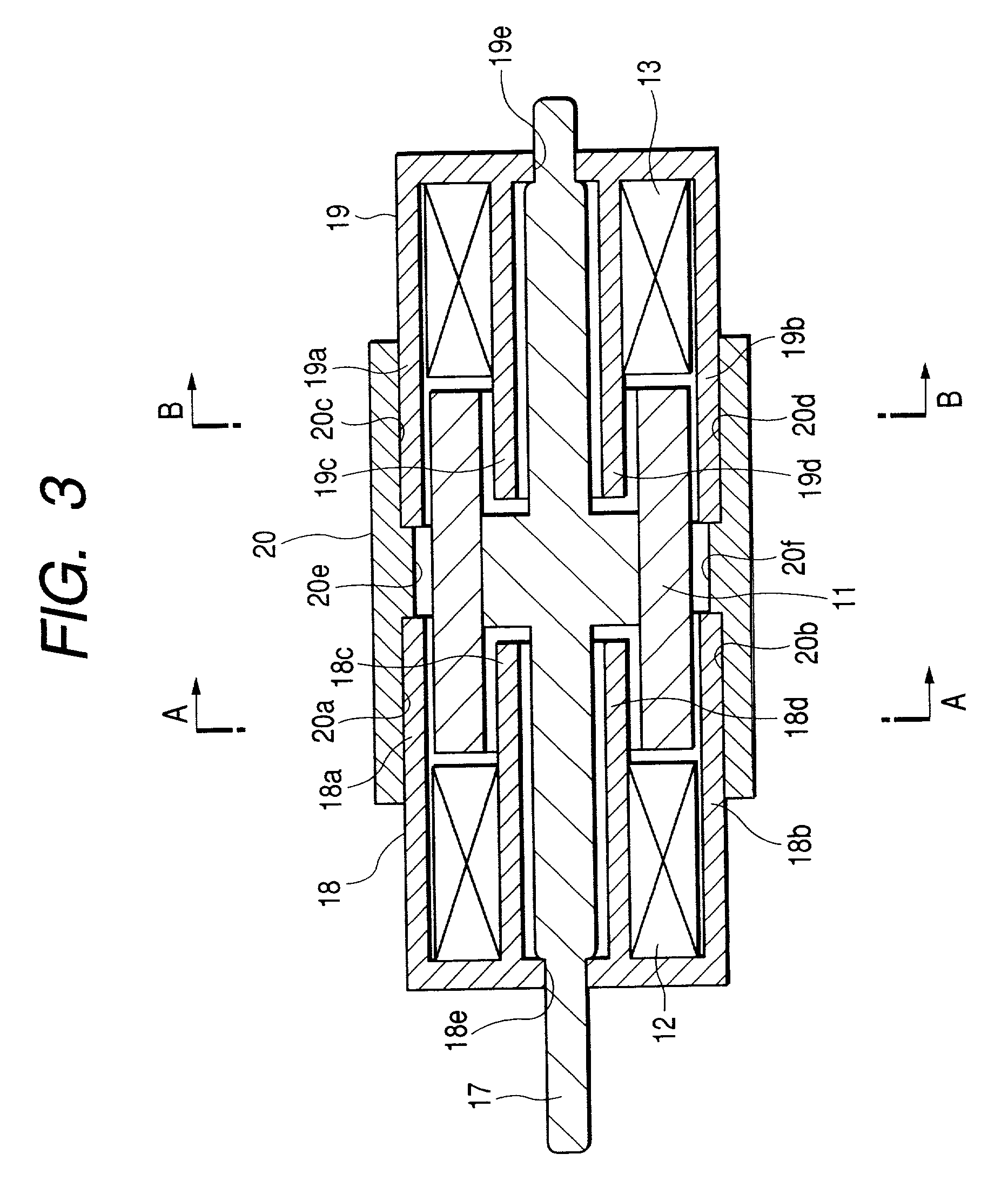Drive control apparatus for stepping motor
- Summary
- Abstract
- Description
- Claims
- Application Information
AI Technical Summary
Problems solved by technology
Method used
Image
Examples
embodiment 2
[0146] Because the configuration of the embodiment is the same as the first embodiment, the description thereof is omitted and the control flow different from there will be described. The micro step drive is as described in the first embodiment. Next, the switching of the full step drive and the micro step drive will be described.
[0147] It is only natural that the rotational speed and the output torque of the motor is higher in the case of the full step drive than in the case of the micro step drive and that the rotational resolution of the output axis of the motor is higher in the case of the micro step drive than in the case of the full step drive. For this reason, when a driven object is to be positioned at some predetermined position, if it is far from a target position, it is driven at a high speed by the full step drive and, when coming adjacent to the target position on the way, driven by the micro step drive so as to perform an accurate positioning in such a manner that a hi...
embodiment 3
[0183] The description of a motor configuration and a practical step drive of the present embodiment will be omitted as it is as described in the first embodiment.
[0184] FIG. 16 is a block diagram of the third embodiment. In FIG. 16, reference symbol M denotes a motor, reference numeral 1 a driving circuit, reference numeral 2 a control circuit, reference numeral 3 a memory (storing means), reference numeral 4 an instruction circuit and reference numeral 5 calculation means. The driving circuit 1 is for letting the energized electrical current designated from the control circuit 2 flow to the coil of the motor M and is composed, for example, of the circuit having H circuits in the corresponding number of coils which can selectively energize the coils composed of four transistors in both directions in the forward and the reverse directions. In the present embodiment, because the description is made by using a stepping motor of two phases, it is provided with two pieces of the H circu...
embodiment 4
[0233] FIGS. 22 through 29 show a fourth embodiment of the present invention. FIG. 22 is an exploded perspective view of an iris blade drive mechanism; FIG. 23, an exploded perspective view of a first drive; FIG. 24, an exploded perspective view of a second drive; FIG. 25, a cross-sectional view of the first drive; and FIGS. 26 through 29, cross-sectional views showing the relationship between the first and second drives and a motor consisting of output means. Because the second drive has the same structure as the first drive, the cross-sectional view of the second drive is similar to that of the first drive in FIG. 25.
[0234] In FIGS. 22 through 29, a reference numeral 1 indicates a cylindrical magnet, a component of a rotor. The side of the magnet 1 is divided in the circumferential direction into n (10 for the embodiment) magnetized sections 1a, 1b, 1c, 1d, 1e, 1f, 1g, 1h, 1i, and 1j which are magnetized so that they are alternately S and N poles. That is, the magnetized sections ...
PUM
 Login to View More
Login to View More Abstract
Description
Claims
Application Information
 Login to View More
Login to View More - R&D
- Intellectual Property
- Life Sciences
- Materials
- Tech Scout
- Unparalleled Data Quality
- Higher Quality Content
- 60% Fewer Hallucinations
Browse by: Latest US Patents, China's latest patents, Technical Efficacy Thesaurus, Application Domain, Technology Topic, Popular Technical Reports.
© 2025 PatSnap. All rights reserved.Legal|Privacy policy|Modern Slavery Act Transparency Statement|Sitemap|About US| Contact US: help@patsnap.com



